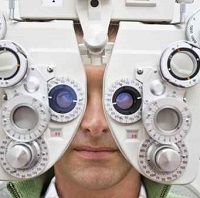Immunosuppressants Help Extend Treatment Effect in Uveitis
Adalimumab (ADA) works well as a treatment for patients with both active and inactive uveitis whether or not they are taking an immunosuppressant (IMM); however, the median time to treatment failure (mTTF) is longer for patients with inactive uveitis taking an IMM.

Adalimumab (ADA) works well as a treatment for patients with both active and inactive uveitis whether or not they are taking an immunosuppressant (IMM); however, the median time to treatment failure (mTTF) is longer for patients with inactive uveitis taking an IMM. These results were presented in poster form by Alfredo Adan MD, of the Hospital Clinic of Barcelona, Spain, at the annual meeting of the American Academy of Ophthalmology in Chicago, IL, in October 2016.
The researchers say, “Use of immunomodulatory agents is indicated when corticosteroid treatment fails to control inflammation or when corticosteroid-sparing therapy is needed to minimize side effects.” Two previous trials, VISUAL I and VISUAL II, investigated the use of ADA in patients with active and inactive uveitis. The researchers continue, “The purpose of this analysis was to stratify the active and inactive non-infectious uveitis patient population on the basis of baseline immunosuppressant usage and to determine the treatment effect between patients with or without IMM use at baseline.”
There was a combined total of 443 patients in the VISUAL I AND VISUAL II trials. Of those 217 were in VISUAL I and 226 were in VISUAL II. The researchers report, “For VISUAL I, median time to treatment failure for both adalimumab and placebo groups were similar irrespective of IMM use at baseline,” and “For VISUAL II, median time to treatment failure was longer among patients using IMM at BL [baseline] for both adalimumab and placebo groups.”
In both groups of patients, the time to treatment failure was longer for patients using IMM than those who were not. Additionally, ADA was more efficient than placebo in both groups, whether or not they were using an IMM.
On the topic of adverse events, the researchers found that in VISUAL I the rate of adverse events (AEs) was similar for those receiving ADAs and placebo, whether or not an IMM was being used. However, they say, “For VISUAL II, for patients using IMM, higher overall AEs rate was observed in placebo group as compared to adalimumab, while it was opposite in the subgroup of patients not using IMMs at baseline.”
Related Coverage:
Drug Effective for JIA-Associated Eye Disease
Study Shows TNF Inhibitors Prevent RElapse of Uveitis in Most Patients with Ankylosing Spondylitis
Incidence of Syphilis Has Been Increasing, and Uveitis May Be Its First Sign